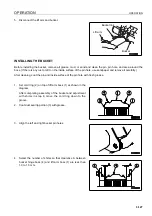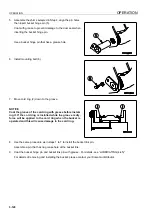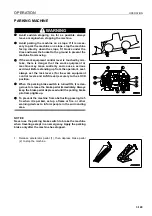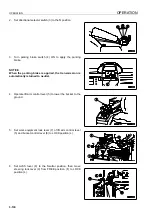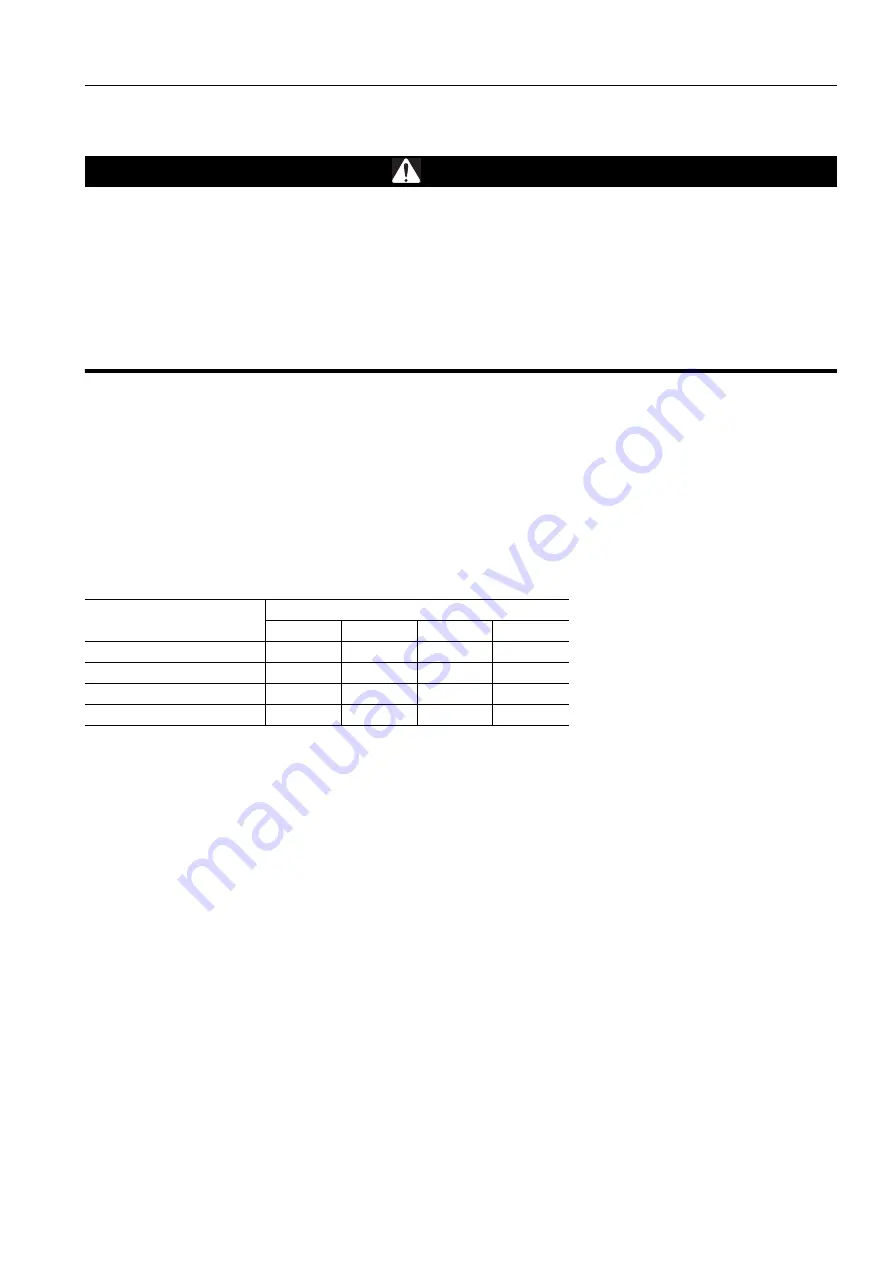
OPERATION
COLD WEATHER OPERATION
3-141
BATTERY
3
WARNING
q
The battery generates flammable gas. Do not bring fire or sparks near the battery.
q
Battery electrolyte is dangerous. If it gets in your eyes or on your skin, wash it off with a large amount
of water and consult a doctor.
q
Battery electrolyte dissolves paint. If it gets on the bodywork, wash it off immediately with water.
q
If the battery electrolyte is frozen, do not charge the battery or start the engine with a different power
source. There is danger that the battery may explode.
q
Battery electrolyte is toxic. Do not let it flow into drainage ditches or spray it on to the ground surface.
When the ambient temperature drops, the capacity of the battery will also drop. If the battery charge ratio is low,
the battery electrolyte may freeze. Maintain the battery charge as close as possible to 100%. Insulate it against
cold temperature to ensure the machine can be started easily the next morning.
REMARK
Measure the specific gravity and calculate the charging rate from the following conversion table.
q
As the battery capacity drastically drops in low temperatures, cover or remove the battery from the machine,
store the battery in a warm place, and install it again the next morning.
q
If the electrolyte level is low, add distilled water in the morning before beginning work. Do not add water after
the day's work to prevent diluted electrolyte in the battery from freezing during the night.
PRECAUTIONS AFTER COMPLETION OF WORK
3
To prevent mud, water, or the undercarriage from freezing and making it impossible for the machine to move on
the following morning, observe the following precautions.
q
Remove all the mud and water from the machine body. In particular, wipe the hydraulic cylinder rods clean to
prevent damage to the seal caused by mud, dirt, or drops of water on the rod from getting inside the seal.
q
Park the machine on hard, dry ground.
If this is impossible, park the machine on boards.
The boards prevent the tracks from freezing to the ground, and allow the machine to be moved the next morn-
ing.
q
Open the drain valve and drain any water collected in the fuel system to prevent it from freezing.
q
Fill the fuel tank to capacity. This minimizes moisture condensation in the tank when the temperature drops.
Charging
Rate (%)
Electrolyte Temperature (°C)
20
0
-10
-20
100
1.28
1.29
1.30
1.31
90
1.26
1.27
1.28
1.29
80
1.24
1.25
1.26
1.27
75
1.23
1.24
1.25
1.26
Summary of Contents for WA800-3E0
Page 2: ......
Page 3: ...FOREWORD 11...
Page 27: ...SAFETY SAFETY LABELS 2 5 LOCATION OF SAFETY LABELS 2...
Page 66: ...GENERAL VIEW OPERATION 3 4...
Page 84: ...EXPLANATION OF COMPONENTS OPERATION 3 22 SWITCHES 3...
Page 224: ...TROUBLESHOOTING OPERATION 3 162...
Page 309: ...SPECIFICATIONS 15...
Page 330: ...HANDLING MACHINES EQUIPPED WITH VHMS ATTACHMENTS OPTIONS 6 20...
Page 331: ...INDEX 17...
Page 332: ...INDEX 7 2...
Page 335: ...COLOPHON 18...

